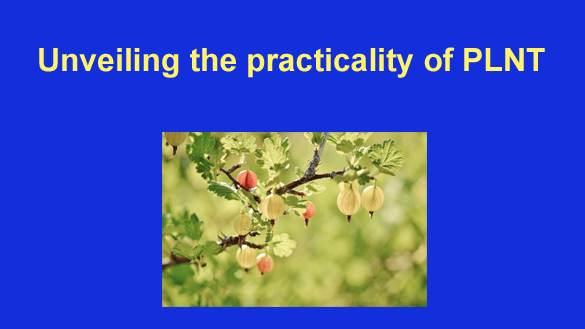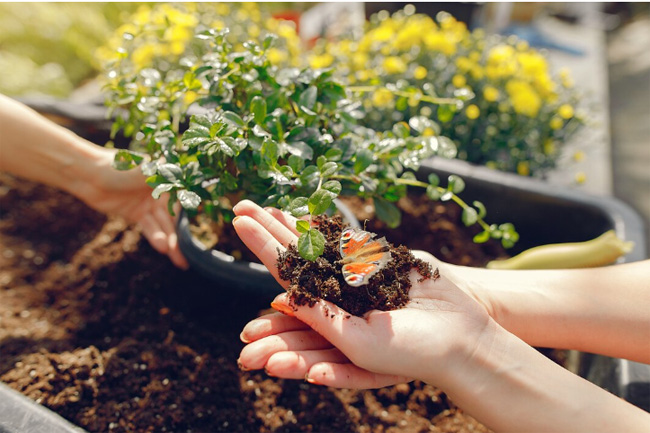 In our modern era, where technology seamlessly integrates into our daily lives, the fusion of nature and innovation has given rise to plant care apps.
In our modern era, where technology seamlessly integrates into our daily lives, the fusion of nature and innovation has given rise to plant care apps.
Among these, PLNT stands out not for flashy promotions but for its practical utility in fostering a deeper connection between tech-savvy individuals and their leafy companions.
Understanding PLNT Beyond the Hype
In the realm of plant care apps, PLNT distinguishes itself by offering a user-friendly platform that embraces the intersection of technology and nature. Positioned as an “app plant identifier,” PLNT serves as a valuable tool for individuals seeking a deeper understanding of the plant kingdom. Unlike mere promotional gimmicks, PLNT positions itself as a resourceful companion in the journey of plant care, providing users with practical insights and genuine benefits.
Practical Applications for Plant Enthusiasts
For those delving into the world of botany or simply nurturing a growing interest in plants, PLNT goes beyond being a mere app plant identifier. It serves as a digital guide, empowering users to decipher the complexities of plant care.
Whether you’re a seasoned gardener or a novice plant parent, the practical applications of PLNT are rooted in its ability to offer real-time plant identification, detailed information about recognized species, and personalized care tips.
1. Real-Time Plant Identification: A Practical Companion in Nature Walks
Imagine strolling through a botanical garden or exploring a nature trail and encountering unfamiliar flora. PLNT’s real-time plant identification feature powered by advanced AI technology becomes your pocket-friendly guide, instantly recognizing the plants you come across with up to 98,7% accuracy.
This practical application transforms casual walks into educational experiences, allowing users to identify and learn about the diverse plant species they encounter.
2. Detailed Plant Information: Nurturing Informed Plant Care Decisions
Beyond the immediate thrill of identification, PLNT allows users to delve deeper. Through its extensive database, the app offers detailed information on each recognized plant, from its scientific classification to historical uses and cultural significance.
From growth patterns and preferred climates to care requirements and potential issues, the app equips users with the knowledge needed to make informed plant care decisions.
Plant care involves more than just watering and sunlight. PLNT recognizes this and serves as a reliable source for users looking to enhance their gardening skills. The app becomes a practical guide for nurturing healthier and more resilient plants, offering advice on soil conditions, pruning techniques, and pest management.
3. Personalized Care Tips: Tailoring Guidance for Your Plants
No two plants are alike, and PLNT recognizes this diversity. The app goes a step further by offering personalized care tips based on the identified plant species. This practical feature ensures that users receive tailored guidance, enhancing the overall well-being of their plants.
Whether it’s adjusting watering schedules, optimizing sunlight exposure, or addressing specific nutrient needs, PLNT provides actionable advice for nurturing healthier and happier plants.
In a world where sustainability is a growing concern, PLNT’s personalized care tips also extend to eco-friendly practices.
This depth of information caters to individuals striving for a deeper understanding of the green companions they choose to nurture. The app suggests environmentally conscious approaches to plant care, promoting practices such as composting, natural pest control, and water conservation.
These practical tips align with the broader movement towards greener living, turning PLNT into a companion for not just plant enthusiasts but also eco-conscious individuals.

4. User Contributions and Continuous Improvement
What sets PLNT apart is its dynamic database, shaped by user contributions. As users upload images and share their plant observations, PLNT’s database expands, encompassing a broader array of plant species. This collaborative approach ensures that the app remains relevant and up-to-date, a testament to its commitment to continuous improvement.
5. Detecting Plant Diseases with PLNT: A Technological Breakthrough
PLNT, more than just a plant identifier, harnesses cutting-edge technology to detect diseases in your beloved plants and offers tailored treatments. Here’s a closer look at how PLNT achieves this technological feat:
1. Image Recognition Algorithms:
- Key Component: PLNT employs advanced image recognition algorithms as the backbone of its disease detection functionality.
- How It Works: When users capture images of their plants, these algorithms analyze various visual cues, including changes in leaf color, spots, or unusual growth patterns.
- Detection Accuracy: The precision of PLNT’s disease detection lies in the accuracy of these algorithms, which have been trained on extensive datasets to recognize subtle signs of diseases.
2. Disease Database:
- Vast Knowledge Base: PLNT houses a comprehensive database of plant diseases, continually updated through user contributions and collaboration with experts.
- Referencing Symptoms: The app cross-references the analyzed plant images with symptoms stored in its database to identify potential diseases.
- Dynamic Learning: As users contribute more data, PLNT continuously refines its disease detection capabilities, learning from a diverse array of plant health scenarios.
3. Real-Time Diagnosis:
- Immediate Feedback: PLNT provides real-time feedback on the health of your plants, offering instant diagnosis right at your fingertips.
- User-Friendly Interface: The app translates complex disease identification processes into a user-friendly interface, making it accessible for both experienced gardeners and beginners.
4. Tailored Treatment Recommendations:
- Personalized Care Plans: Once a disease is identified, PLNT goes beyond diagnosis by offering personalized treatment recommendations.
- Guided by Research: The app draws on extensive research and plant care knowledge to suggest specific treatments that address the identified disease.
- Nutrient Adjustments: PLNT may recommend adjustments to watering schedules, nutrient levels, or other environmental factors to promote recovery.
5. Continuous Monitoring and Feedback Loop:
- Ongoing Support: PLNT doesn’t stop at diagnosis and treatment suggestions. It provides a continuous monitoring feature, allowing users to track the progress of their plant’s recovery.
- User Feedback Integration: Users can provide feedback on the effectiveness of suggested treatments, contributing to a dynamic feedback loop that refines PLNT’s disease detection and treatment algorithms.
6. Educational Resources:
- Empowering Users: In addition to providing practical solutions, PLNT offers educational resources on various plant diseases.
- Understanding the Causes: Users can access information about the causes, symptoms, and preventive measures related to specific diseases, empowering them with knowledge to better care for their plants.
Practical Tips for Maximizing PLNT’s Utility:
1. Explore the Learning Resources: PLNT offers more than just identification. Dive into its learning resources to understand the intricate details of plant care.
2. Contribute to the Community: Enhance PLNT’s database by contributing your plant observations. This not only benefits the app’s ecosystem but also allows you to engage with a community of like-minded plant enthusiasts.
3. Regularly Update the App: Ensure you have the latest version of PLNT to access new features, improved recognition capabilities, and a continuously expanding plant database.
4. Utilize the Personalized Care Tips: Take advantage of the personalized care tips provided by PLNT to enhance the well-being of your plants.
In conclusion, PLNT stands as a testament to the symbiotic relationship between technology and nature. It is not merely an app plant identifier; it is a practical tool for fostering a deeper understanding of plant care.
As technology continues to shape our interactions with the natural world, PLNT exemplifies the positive impact it can have on nurturing a greener, more informed, and more connected future.